#RetailOptimization
Explore tagged Tumblr posts
Text
On-shelf availability solution market experiencing robust demand due to rising interest in real-time intelligence
In today’s competitive retail landscape, ensuring that products are available on shelves when customers are ready to buy is more than a logistics challenge it is a strategic imperative. The On-Shelf Availability (OSA) solution market has emerged as a critical enabler for retailers and suppliers aiming to enhance customer satisfaction, drive sales, and reduce operational inefficiencies. As consumer expectations evolve and technological capabilities expand, the on-shelf availability solution market is undergoing rapid transformation, fueled by innovations in automation, data analytics, and artificial intelligence.

Understanding On-Shelf Availability
On-shelf availability refers to the presence of products in the right place, at the right time, and in the right quantities on store shelves. When products are out of stock, not only do sales suffer, but customer loyalty can be eroded. Research indicates that out-of-stock events result in lost sales of up to 8% for retailers, a significant figure in a low-margin industry.
OSA solutions are designed to combat this problem through real-time monitoring, predictive analytics, and responsive replenishment systems. These tools provide end-to-end visibility into the supply chain and store operations, enabling proactive identification and resolution of availability issues.
Market Drivers
Several factors are propelling the growth of the OSA solution market:
Rising Consumer Expectations: Today’s consumers expect seamless shopping experiences, both in physical stores and online. The inability to find desired products in-store often drives them to competitors or online alternatives. OSA solutions help retailers meet these expectations consistently.
Technological Advancements: The integration of IoT, AI, computer vision, and machine learning is revolutionizing how retailers monitor inventory. Smart shelves, RFID tagging, and shelf-scanning robots are increasingly being deployed to automate data collection and improve accuracy.
Shift to Omnichannel Retail: With retailers operating across multiple channels, maintaining accurate inventory across platforms is essential. OSA solutions ensure that inventory data is synchronized, enabling better fulfillment strategies such as buy-online-pick-up-in-store (BOPIS).
Supply Chain Disruptions: Global events such as the COVID-19 pandemic have highlighted the fragility of supply chains. In response, retailers are investing in OSA tools that provide early warnings for potential stockouts and optimize replenishment processes.
Focus on Operational Efficiency: Retailers are under pressure to control costs while improving service levels. OSA solutions support these objectives by reducing manual labor, minimizing inventory holding costs, and streamlining in-store operations.
Competitive Landscape and Key Players
The OSA solution market is characterized by a mix of established technology firms and innovative startups. Key players include Zebra Technologies, SAP, Oracle, Avery Dennison, and Trax. These companies offer diverse solutions ranging from handheld inventory scanners to sophisticated AI-powered image recognition systems that assess shelf conditions.
Retailers are also partnering with supply chain technology vendors and consultants to implement tailored OSA strategies. Customization, scalability, and integration with existing retail systems are critical factors influencing vendor selection.
Challenges to Market Growth
Despite its potential, the OSA solution market faces several challenges:
High Implementation Costs: Advanced OSA technologies can be capital-intensive, particularly for small and mid-sized retailers. The cost of sensors, infrastructure, and training can be prohibitive without clear short-term ROI.
Data Integration Issues: OSA tools must integrate seamlessly with point-of-sale (POS), ERP, and warehouse management systems to be effective. Data silos and legacy systems can hinder real-time visibility.
Privacy Concerns: Some OSA technologies, especially those involving video and image capture, raise concerns about customer privacy and data security.
Change Management: Organizational resistance to adopting new technologies can delay or limit the impact of OSA implementations. Training and leadership support are essential to ensure successful adoption.
Outlook and Opportunities
The future of the OSA solution market appears robust, with steady growth anticipated across global regions. North America and Europe are currently leading in adoption, but Asia-Pacific is expected to experience the highest growth rate due to the expansion of modern retail and e-commerce.
Emerging trends include the use of generative AI to forecast demand with higher precision, edge computing for real-time analytics at the store level, and integration with sustainability initiatives to reduce waste through smarter inventory practices.
Retailers that embrace OSA solutions not only stand to improve availability and reduce lost sales but also gain a competitive edge through enhanced operational agility and customer loyalty. As technology matures and becomes more affordable, broader adoption across all retail tiers is expected.
0 notes
Text
Revolutionize Inventory with Smart Receiving Solutions

🌟 Transforming the Way Retailers Manage Inventory 🌟
Struggling with inventory bottlenecks? The solution lies in smart receiving—a game-changing process streamlining inventory management, improving accuracy, and saving time.
Why Smart Receiving?
📦 Faster Processing: Reduce receiving times by 40%.
🛠️ Enhanced Accuracy: Eliminate manual errors.
💡 Real-Time Insights: Gain instant visibility into inventory.
By adopting smart receiving systems, you’re not just managing stock; you’re optimizing your entire supply chain.
How Does It Work?
🔹 Automate data capture with RFID technology. 🔹 Track shipments from dock to shelf. 🔹 Seamlessly integrate with existing systems.
This ensures that every item is accounted for, enhancing inventory efficiency and reducing operational costs.
The Benefits Are Clear
✅ Cost Savings: Minimized shrinkage and labor costs. ✅ Better Decision-Making: Data-driven insights to meet customer demands. ✅ Scalability: Adaptable to businesses of any size.
💡 Pro Tip: Retailers implementing smart receiving report 50% fewer inventory discrepancies in just 3 months.
📲 Want to Learn More? Discover how smart receiving can elevate your retail operations!
Click Here - Smart Receiving: Managing Retail’s Invisible Chaos
#inventorymanagement#altavantconsulting#retailefficiency#retailsolutions#rfidtechnology#customerexperience#datadrivendecisions#goodfaithreceiving#octoplus#retailinnovation#SmartReceiving#InventoryEfficiency#RetailOptimization#InventoryManagement#SupplyChainSolutions#RetailInnovation
0 notes
Text
The Retail Battleground: Brick-and-Mortar vs. E-commerce and the Rise of Instant Delivery

Written By: Gargi Sarma
Introduction:
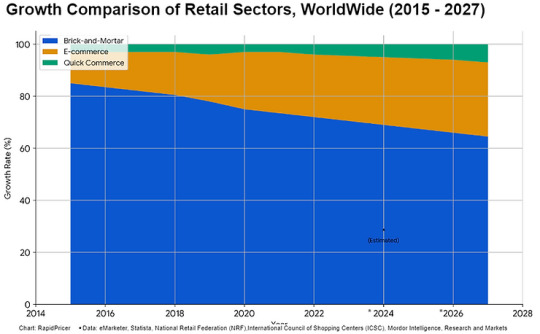
Figure 1: Growth Comparison of Retail Sectors, WorldWide (2015 - 2027)
Global Views on Brick-and-Mortar, E-commerce, and Quick Commerce
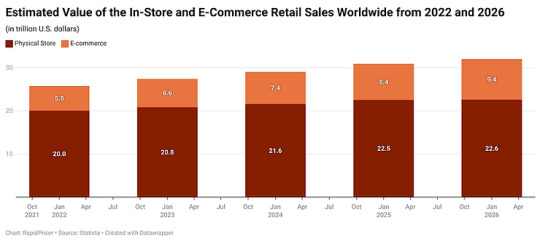
Figure 2: Estimated Value of the In-Store and E-Commerce Retail Sales Worldwide from 2022 and 2026
Remarkably, brick-and-mortar sales growth outpaced e-commerce growth for the first time in 2021 (Forbes, 2022). This demonstrates how much customers still want the in-person purchasing experience. But physical establishments run the risk of slipping behind if they don't adjust to the internet world, including by providing click-and-collect options.
In recent years, e-commerce has grown at an exponential rate. Global e-retail sales are predicted by Statista to reach USD 6.5 trillion by 2023, making up more than 22% of all retail sales. In emerging nations like India, where smartphone usage and internet penetration are rising quickly, this trend is especially noticeable.
Instant Delivery: A Revolution in Retail
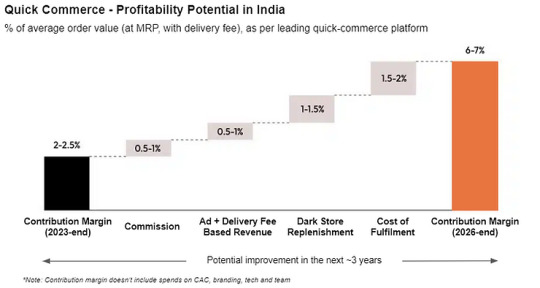
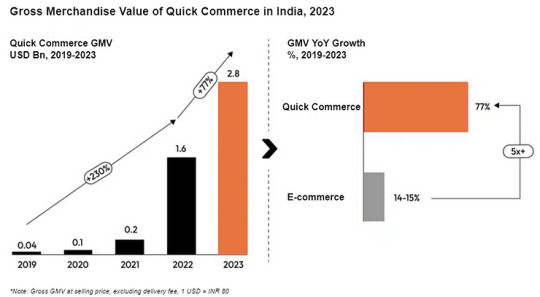
Figure 4: GMV of Quick Commerce in India, 2023 (Source: Redseer) According to Redseer, by 2025, the rapid commerce market in India is expected to grow at a rate of 10-15 times faster than any other market, with a valuation of almost $5.5 billion. This will put it ahead of other markets, including China, in terms of the adoption of quick commerce.
Shifting Logistics and Delivery Investment Dynamics
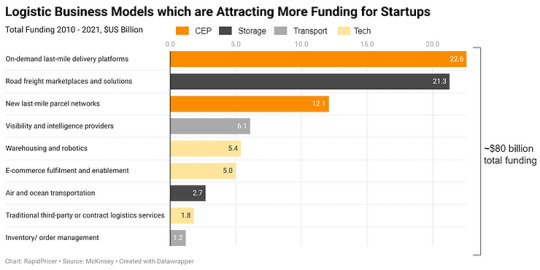
Figure 5: Logistic Business Models Which are Attracting More Funding for Startups
Conclusion:
Businesses need to be competitive as the retail industry changes and adjusts to shifting consumer tastes and technological improvements. Although e-commerce and rapid delivery services have unheard-of development prospects, these business models' viability depends on tackling regional obstacles and making investments in creative solutions. Retailers may prosper in a world that is becoming more digitally and globally integrated by embracing innovation and comprehending the distinctive dynamics of various markets.
About RapidPricer
RapidPricer helps automate pricing and promotions for retailers. The company has capabilities in retail pricing, artificial intelligence and deep learning to compute merchandising actions for real-time execution in a retail environment.
Contact info:
Website: https://www.rapidpricer.com/
LinkedIn: https://www.linkedin.com/company/rapidpricer/
Email: [email protected]
#retailtrends hashtag#ecommerce hashtag#brickandmortar hashtag#instantdelivery hashtag#logistics hashtag#retailinnovation hashtag#retailtech hashtag#digitaltransformation hashtag#consumerbehavior hashtag#globalretail hashtag#marketinsights hashtag#retailindustry hashtag#futureofshopping hashtag#onlineretail hashtag#physicalretail hashtag#supplychain hashtag#techinretail hashtag#retailinvestment hashtag#retailers hashtag#startupinvestment hashtag#retailanalytics hashtag#digitalretail hashtag#shoppingtrends hashtag#retailstrategy hashtag#retailevolution hashtag#economictrends hashtag#retailsolutions hashtag#retailoptimization
0 notes
Text
1 Dollar a Day to Boost Business Conversion Rates.
Xpandretail AI-based data analytics solutions offer transformative insights, reshaping business operations, and boosting profitability in a mere 60 days.
Thanks to our AI-based people counting solutions, enjoy unparalleled accuracy in data, ensuring reliable insights for informed decision-making.
We offer solutions that are 100% GDPR compliant, prioritizing the privacy and security of your data. With over 24 years of experience in the region, Xpandretail stands out as the ideal choice for driving business optimization and growth.
Click to know more about our data analytics solutions: https://xpandretail.com/data-analytics/
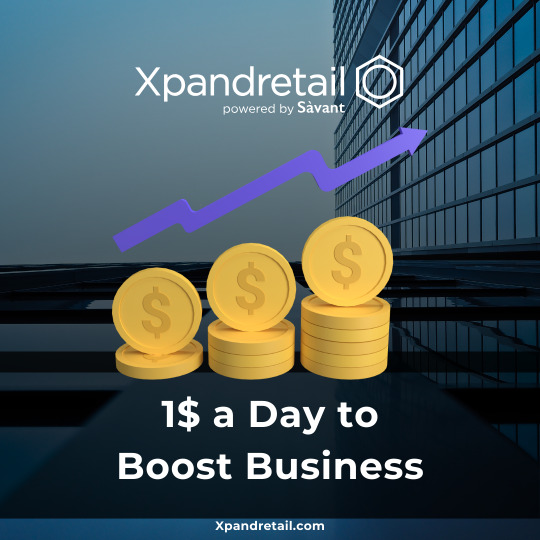
#BusinessSuccess#DataAnalytics#AI#RetailOptimization#Xpandretail#peoplecounting#footfallanalytics#SàvantDataSystem#MallSense
1 note
·
View note
Text
Optimize Operation Cost
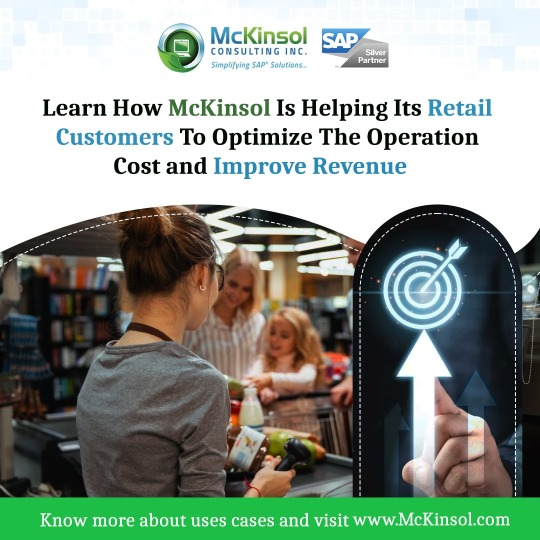
Discover how McKinsol is assisting its retail clients in reducing operational costs while enhancing revenue streams…!!
Contact us at: https://mckinsol.com/contact-us/ For More Information: www.mckinsol.com
Get Regular Updates:
➽Facebook: https://www.facebook.com/mckinsol
➽LinkedIn: https://www.linkedin.com/company/mckinsol
➽Twitter: https://twitter.com/mckinsol
#Mckinsol#RetailOptimization#CostEfficiency#RevenueGrowth#RetailSolutions#OperationalExcellence#BusinessImprovement
0 notes
Text
Dynamic Assortment based on Seasons and Demand

Written By: Gargi Sarma
Mexico is distinguishing itself as one of the major markets through persistent development and gradual but consistent expansion in numerous areas. One industry that could outpace Mexico's typical projected national growth is the retail and consumer sector. By 2028, the retail market in Mexico is anticipated to expand at a CAGR of 5%. A mix of sociodemographic and economic changes, products, and commercial strategies to lure Mexican customers will drive this. More than any other industry, Mexico's retail and consumer sectors represent the prospects arising from the country's economic dualism. Alongside the resilient traditional 'changarros' and adapted ideas like OXXO and Farmacias Similares, there is a steady growth and development of modern format retail outlets and global franchises like Walmart and Starbucks.
In Mexico, COVID-19 has had a major impact on consumer shopping habits. Companies increased their efforts on digital platforms in response to the COVID-19 epidemic. These investments included creating a more user-friendly website, introducing direct-to-consumer operations, and forming partnerships with last-mile delivery providers.
The retail fashion sector in Mexico is thriving and changing quickly, driven by a wide range of consumer preferences and buying habits. Retailers can find a wide range of prospects in the Mexican market, from vibrant metropolises to charming small communities. A significant obstacle, though, is there among all of this dynamism: seasonal variations in consumer demand. Mexico's vast territory, diverse climate, and rich cultural traditions create a compelling case for optimizing assortments based on seasonal and location-specific factors. Here's why:
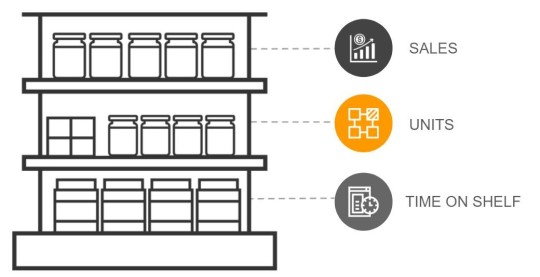
Figure 1: Importance of Assortment Planning
Increased Sales and Profits:
Meeting local demand: Offering products relevant to the local climate, holidays, and cultural preferences ensures you cater to customer needs and avoid stocking unwanted inventory. Imagine stocking winter jackets in Cancun or beach gear in Monterrey during winter.
Seasonal trends: Capitalizing on seasonal events like Christmas, back-to-school, or Cinco de Mayo with targeted product offerings can significantly boost sales.
Differentiation from competitors: Understanding local nuances allows you to stand out by offering unique products not available elsewhere, attracting and retaining customers.
Reduced Costs and Improved Efficiency:
Optimized inventory management: Matching your assortment to local demand helps reduce overstock and deadstock, lowering storage and disposal costs.
Improved supplier relationships: Working with local suppliers for seasonal products aligns with sustainability goals and potentially reduces transportation costs.
Efficient marketing: Tailoring marketing campaigns to specific locations and seasons ensures you reach the right audience with relevant messaging, maximizing campaign effectiveness.
Challenges of Seasonal Fluctuations:
Inventory management: Predicting demand accurately and avoiding overstock or stockouts is challenging, especially with sudden weather changes.
Price optimization: Balancing profits with competitive pricing during different seasons requires careful planning and adjustments.
Marketing and promotions: Tailoring campaigns to each season and reaching the right audience while managing advertising budgets effectively is crucial.
Staffing: Hiring and training additional staff during peak seasons can be costly and demanding.
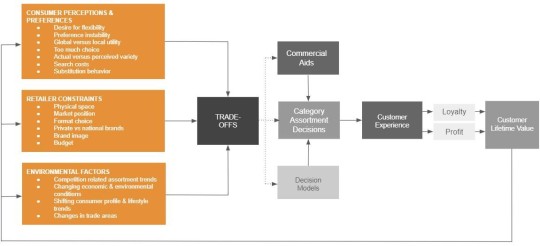
Figure 2: Challenges in Assortment Planning (Source: Why is Assortment Planning so Difficult for Retailers? A Framework and Research Agenda, Murali et al., 2009)
Geographical Considerations in Mexico:
Mexico's vastness and diverse geography paint a complex picture for retailers. Understanding how climate, terrain, and cultural traditions influence consumer behavior across regions is crucial for tailoring assortments and maximizing success.
Diverse Landscape:
Northern regions: Arid climates with hot summers and mild winters dominate. Think Chihuahua, Sonora, and Baja California.
Central highlands: Temperate climate with warm, dry summers and cool winters. Puebla, Tlaxcala, and Mexico City fall under this category.
Southern regions: Tropical climates with high humidity and hot temperatures year-round. Chiapas, Quintana Roo, and Oaxaca exemplify this zone.
Coastal areas: Varied climates depending on location. Pacific coasts tend to be drier, while Gulf coasts experience more humidity.
Impact on Preferences:
Clothing: Northern regions demand lighter clothing year-round, while southern regions require breathable fabrics suitable for humid conditions. Winter gear becomes relevant in the highlands.
Outdoor activities: Northern regions favor desert sports and hiking, while coastal areas see demand for water sports and beach gear. The highlands might see higher sales of camping equipment.
Home decor: Southern regions might opt for lighter furniture and natural materials, while colder areas might prefer heavier fabrics and heating solutions.
Food: Local ingredients and dishes vary greatly across regions. Northern cuisine tends to feature meat and beans, while southern cuisine leans towards seafood and tropical fruits.
Data-driven Approach to Assortment Planning:
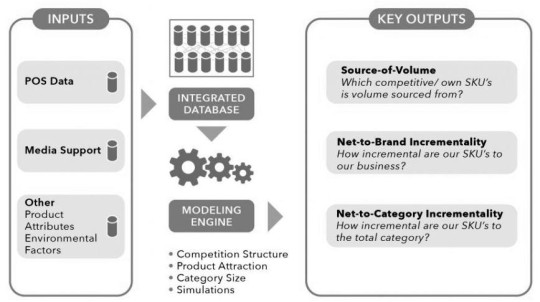
Figure 3: Data-driven Approach to Assortment Planning (Source: Analytic Edge)
These days, modern retail assortment planning is data-driven, using sales data to estimate demand and gain insight into customer preferences and historical performance. By disclosing rival tactics and market trends, market research enhances this strategy and enables merchants to modify assortments appropriately. Customization of product offers is made possible by the deeper understanding of customer behavior and preferences provided by consumer insights obtained through focus groups and surveys. By offering precise demand projections based on historical sales data and industry trends, machine learning and predictive analytics further improve assortment decisions. Retailers earn higher sales as a result of this inventory optimization.
Implementing Seasonal and Location-Based Assortments
The implementation of location- and season-based assortments in retail necessitates a methodical approach that takes seasonal shifts in consumer demand and geographic variations into account. Retailers can customize assortments to meet local demand and seasonal components by examining market trends, regional preferences, and historical sales data. Data analytics and inventory management systems enable strategies for optimizing inventory levels and SKU distribution across sites. Efficient cooperation between suppliers and partners guarantees the prompt supply of seasonal merchandise, and partnerships with local designers provide distinctive, locally-inspired items to assortments, making them more appealing to local clients.
Technology Solutions for Assortment Optimization:

Figure 4: Strategies to Optimize Product Assortment
Technology solutions are essential for retail assortment optimization because they provide state-of-the-art tools and platforms that improve decision-making and expedite assortment planning. Retailers can take advantage of a range of software tools and platforms, including category management software and assortment optimization platforms, that are designed to match their unique requirements. Because they can provide data-driven insights and predictive modeling skills, advanced analytics, artificial intelligence, and machine learning are essential for enhancing assortment strategies. Careful planning and execution are necessary for the successful integration of digital solutions into retail operations. To guarantee maximum benefits, special requirements must be assessed, comprehensive training must be given, and maintenance must continue.
Examples of Mexican Retailers Using Dynamic Assortment:
Costco - Costco's dynamic assortment strategy keeps up with seasonal and cultural trends, such as Mexican holidays and festivals, and offers a variety of products to attract customers.
Walmart - Walmart's Mexican stores, such as Sam's Club and Walmart Supercenter, feature dynamic assortments of products that change based on the seasons and customer demand.
The Home Depot - The Home Depot's Mexican stores offer a wide range of products for DIY enthusiasts and contractors, including seasonal items such as Christmas lights and Easter decorations.
Target - Target's Mexican stores, such as Target Hidalgo and El Paso.
Conclusion:
In summary, changing customer tastes, macroeconomic conditions, and technological breakthroughs will propel the retail industry in Mexico, which is expected to experience rapid expansion. Retailers may successfully manage seasonal swings, regional variances, and shifting market dynamics to optimize assortments and boost profitability by using data-driven strategies. The secret to success in this dynamic and exciting market will be to leverage technology solutions, strategic relationships, and a thorough awareness of local situations.
About RapidPricer
RapidPricer helps automate pricing and promotions for retailers. The company has capabilities in retail pricing, artificial intelligence and deep learning to compute merchandising actions for real-time execution in a retail environment.
Contact info:
Website: https://www.rapidpricer.com/
LinkedIn: https://www.linkedin.com/company/rapidpricer/
Email: [email protected]
#retailmexico hashtag#consumersector hashtag#retailtrends hashtag#mexicanmarket hashtag#assortmentplanning hashtag#retailstrategy hashtag#seasonaldemand hashtag#geographicalvariations hashtag#retailtech hashtag#dataanalytics hashtag#inventorymanagement hashtag#retailinnovation hashtag#customerpreferences hashtag#marketinsights hashtag#retailinsights hashtag#retailers hashtag#dynamicassortment hashtag#retailautomation hashtag#mexicanretailers hashtag#retailexpansion hashtag#economicgrowth hashtag#RetailChallenges hashtag#marketdynamics hashtag#seasonaltrends hashtag#locationbasedassortments hashtag#retailtechnology hashtag#artificialintelligence hashtag#machinelearning hashtag#retailoptimization
1 note
·
View note
Text
Elevate your business with Xpandretail Data Analytics Solutions.
Join our global community of over 550 satisfied customers who have experienced the power of data transformation.
With 80,000+ successful installations and a firm commitment to GDPR compliance, we're the trusted choice for businesses seeking business intelligence and AI-based data analytics.
Explore the possibilities: https://xpandretail.com/data-analytics/

#DataAnalytics#BusinessIntelligence#GlobalSolutions#GDPRCompliant#PeopleCountingSolutions#FootfallAnalyticsSolutions#DataAnalyticsSolutions #Xpandmall#SàvantDataSystem#MallSense#Xpandretail#RetailOptimization#SmartBusiness
1 note
·
View note
Text
Xpandretail Ai-based people counting solutions
Xpandretail Ai-based solutions help retailers understand how people counting benefits their business.
Real-time footfall insights for accurate data.
Optimize staffing efficiently.
Maximize marketing impact. And more.
Click to schedule a demo: https://xpandretail.com/people-counting/

#PeopleCounting#FootfallAnalytics#DataAnalytics#PeopleCountingSolutions#FootfallAnalyticsSolutions#DataAnalyticsSolutions #Xpandmall#SàvantDataSystem#MallSense#Xpandretail#RetailOptimization#SmartBusiness
1 note
·
View note
Text
Pricing Best Practices in the Fashion Industry

Written By: Gargi Sarma
Introduction:
The fashion industry's retail pricing landscape is a complex and ever-changing environment that is influenced by a wide range of factors, including customer demand, market trends, brand positioning, and production costs. Pricing strategies are crucial in defining a brand's competitiveness, profitability, and overall market placement in the dynamic world of fashion. Fashion merchants must make wise decisions to strike a delicate balance between providing value to customers and upholding a sustainable business strategy. This investigation explores the nuances of retail pricing in the fashion sector, illuminating the important factors, difficulties, and tactics that companies use to deal with this complicated environment. Understanding the factors at work is crucial for both industry insiders and consumers looking to get insight into the dynamics that drive the cost of style, from the impact of rapid fashion to the growth of e-commerce.
With a predicted cumulative annual growth rate (CAGR) of 3.8%, the worldwide fashion retail market, estimated at USD 1.9 trillion in 2022, is expected to reach USD 2.2 trillion by 2025 (Statista).
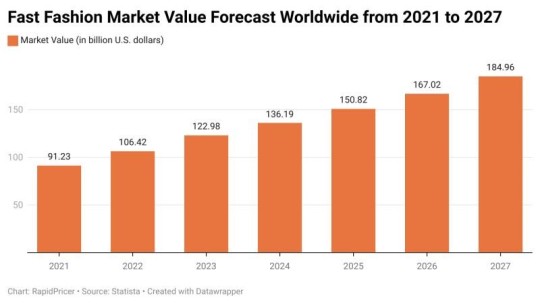
Figure 1: Fast Fashion Market Value Forecast Worldwide 2021 to 2027
In 2022, the global fast fashion market was projected to be valued at more than 106 billion dollars. It was predicted that this would increase significantly in the ensuing years. It was projected that the fast fashion industry would have a global market value of about 185 billion dollars by 2027.
Now let us explore the subtleties of fashion retail pricing and discover the strategies that fashion retailers can use to draw in customers, build brand loyalty, and stay afloat in the always-shifting global fashion industry.
Competitive Pricing in the Fashion Industry:
The fashion industry presents itself as a dazzling realm of short-lived fads and high-stakes trends, but retail pricing is really a battlefield of ruthlessness. Here, companies compete for consumers' attention and market share by using price tags as weapons in an unending battle for their part of their wallets. With a compound annual growth rate (CAGR) of 6.47%, the global fashion retailing market is projected to reach USD 122.6 billion by 2027 from USD 89.61 billion in 2022.
Merchants cannot reliably duplicate that performance over thousands of styles, not even when they precisely balance all the relevant criteria and evaluate them for a given style. For them to incorporate this level of rigor into their daily merchandising, they require at-scale analytical skills.
Successful clothing companies have figured out how to use a scalable, intelligent pricing discipline that responds to their customer's willingness to pay. These retailers are making more informed judgments by carefully considering their price and promotion expenditures and by utilizing insights from advanced analytics.
This does not imply that business owners should give up on setting prices. Fashion's seasonality and constantly shifting trends necessitate a pricing strategy that combines science and intuition, even if automated pricing solutions have been successful in several hardline categories (Figure 2).
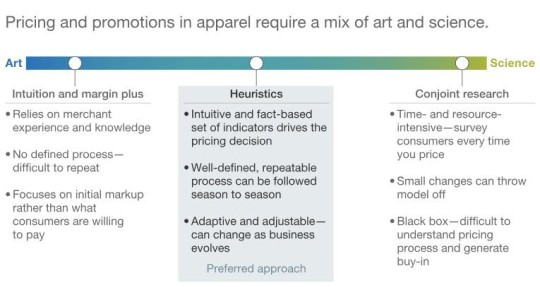
Figure 2: Pricing and promotions in Fashion Industry (Source: McKinsey & Company)
Intensity of Competition:
High Saturation: There are a plethora of players in the fashion business, ranging from agile online startups to international behemoths. Because there are so many options available, customers are picky and brands are striving to distinguish out.
Rules of Transparency: Comparing prices is now quite easy thanks to the internet. Brands are continually forced to modify and improve their pricing tactics as a result of consumers' ability to instantaneously pit them against one another.
Quick Fashion Madness: Traditional fashion is under pressure as fast fashion's lightning-fast pace produces stylish items at ridiculously low costs. Strategic discounting is essential to the fast fashion industry, which is defined by its quick trend cycles and reasonably priced clothing. However, the discounting game becomes more difficult when there are several retail locations. It can be very difficult to strike a balance between local competitiveness, consumer behavior, and profitability across many geographies
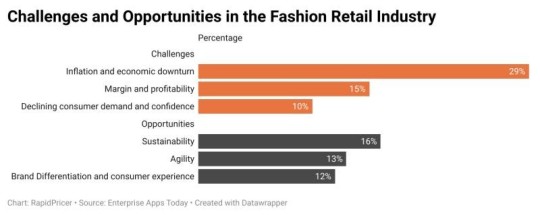
Figure 3: Challenges and Opportunities in the Fashion Retail Industry
Sustainability is regarded as the best opportunity for fashion retail firms, according to a 2022 study of fashion professionals globally (Enterprise Apps Today). Of those surveyed, about sixteen percent said that the biggest opportunity facing the fashion sector in 2023 is sustainability. In the same year, the industry was expected to face major challenges mostly from inflation and economic deterioration.
Data Highlights:
According to a McKinsey analysis from 2021, 70% of fashion executives consider pricing to be their most important strategic tool.
According to a 2022 Edited research, the average discount percentage in the US across all apparel categories was an astounding 54%. This demonstrates how common markdowns are and how constant demand to offer offers is.
The Environment of Competition:
Value vs. Premium: Brands with a tight budget, like as Zara and H&M, rely on providing fashionable looks at reasonable costs. In the meantime, high-end brands such as Chanel and Dior demand premium pricing due to their exclusivity and fine craftsmanship.
Niche vs. Mass: Independent, smaller firms frequently establish a niche by focusing on particular ideals or styles. They must, meanwhile, contend with bigger firms' extensive reach and powerful marketing campaigns.
Online vs. Offline: Traditional retail has been upended by e-commerce. There is more pricing competitiveness when brick-and-mortar stores are undercut by online sellers due to lower overhead costs.
New Approach in Fashion Retail Pricing:
A flurry of cutting-edge tactics that put data, personalization, and dynamic adjustments front and center are challenging the conventional, one-size-fits-all approach to clothing pricing. Let us examine some of the novel strategies that are transforming the fashion pricing landscape:
Data-Informed Pricing: The days of setting prices only by cost plus markups are long gone. These days, brands use enormous information to learn about market trends, rival tactics, and consumer preferences. Pricing choices are influenced by this data, which guarantees that goods are valued fairly and at a competitive price.The online personal styling service Stitch Fix recommends tailored outfits at the best prices by analyzing consumer data such as budget, fit preferences, and past purchases using algorithms.
Dynamic Pricing: Imagine having real-time price fluctuations based on supply and demand, weather, and even inventory levels! Dynamic pricing, which is frequently employed in the hotel and airline sectors, is starting to appear in fashion. Prices can change to maximize income and improve inventory management, depending on variables like popularity, the approach of the end of the season, or competitor discounts.Examples of luxury firms experimenting with dynamic pricing include Burberry and Off-White, which change prices on some items in response to online activity and purchase intent.
Value-Added Pricing: Value-based pricing goes beyond merely cost and markups to consider the perceived value that a product offers to the consumer. This takes into account elements such as brand reputation, ethical sourcing, sustainability, and quality. Brands that base their pricing on the total value offer are able to charge top dollar for goods that have a strong emotional connection with customers.To explain premium pricing for its materials that are obtained ethically and its responsible production procedures, Patagonia, which is well-known for its high-quality outdoor apparel and commitment to sustainability, bases its product prices on factors such as durability, performance, and environmental effects.
Subscriptions Models: Subscription businesses like Rent the Runway and Le Tote allow users to access a carefully curated closet for a monthly charge, in place of purchasing clothing outright. Customers may do this to keep current without going over budget, and brands.An example of a flexible and data-driven pricing strategy is Stitch Fix's "Fix Freestyle" subscription, which sends customers a monthly box of tailored clothing selections with the option to retain what they like and return the rest.
AI-Driven Customization: In the future, solely you will be charged for the clothes you wear! Soon, AI-powered customisation will be available; computers will examine your unique taste in fashion, past purchases, and even your social media activity to suggest and price articles of clothes that are precisely right for you.Although they are still in their infancy, several firms, such as The Dressiest, are utilizing AI to customize price and clothing recommendations according to each person's preferences, body type, and financial situation.
These are just a handful of the innovative methods that are transforming the cost of clothing. Brands can develop lucrative pricing models that appeal to today's tech-savvy and value-conscious consumers while also being equitable and fair by embracing data, personalization, and dynamic strategies. Recall that the future of fashion pricing does not lie in uniform markups but rather in developing a dynamic, data-driven ecosystem that customizes prices to meet the requirements and tastes of each individual customer, eventually benefiting both consumers and companies.
Analytical Solutions in Fashion Retail Pricing:
Effective pricing is a continuous challenge in the changing and complex world of fashion retail. Thankfully, analytical tools may provide much-needed data-driven insights, enabling you to enhance profitability and optimize pricing tactics. Here are some important examples and analytical solutions:
Demand Forecasting: To determine the demand for certain items and designs with accuracy, and examine past sales data, seasonal trends, rival pricing, and outside variables like the state of the economy and the weather. In order to prevent overstocking or understocking, this aids in initial pricing determination.Example: A retailer predicts that a stylish dress with a floral pattern will be in high demand in the spring using AI-powered demand forecasting. Because they expected to be popular, they set an initial price that was marginally higher. This increased sales during the peak of demand allowed them to make more money.
Price Elasticity: Understanding how demand shifts in response to price changes is important for measuring price sensitivity. This aids in optimizing promotional pricing, determining smart markdowns, and preventing losses from needless discounts.Example: A clothing company that studies price elasticity data finds that consumers are quite sensitive to pricing for entry-level t-shirts but not as much for designer pants. They maintain better margins on premium jeans while implementing targeted markdowns on t-shirts to clear inventory without substantially affecting sales.
Competitive Analysis: Benchmarking against rivals: Keep an eye on rivals' pricing policies for comparable products to spot chances for value proposition and differentiation. This guarantees competitive pricing that is consistent with your brand strategy and helps prevent price wars.Example: To determine the price range of comparable footwear sold by other high-end brands, a luxury sneaker company does a competitive analysis. They attract customers who are looking for a mix between cost and exclusivity since they put their prices slightly below average.
Dynamic Pricing: Use algorithms to automatically change prices in response to various parameters, such as the time of day, inventory levels, customer demographics, and online purchasing patterns. Securing the best prices for every product and consumer group optimizes income.Example: To encourage impulsive purchases and hasten inventory clearance, an online fashion shop utilizes dynamic pricing to provide discounts on slow-moving items during off-peak hours.
Markdown Optimization: Determine the best time and amount of markdowns for certain products by analyzing sales data and forecasting future performance. This efficiently removes slow-moving products and creates room for fresh arrivals while minimizing losses.Example: To determine which particular shirt isn't selling well, a department shop employs markdown optimization methods. During a weekend sale, they apply a targeted 20% discount, which boosts sales and lessens the need for inventory.
Keep in mind that analytical solutions are only as good as the supporting data. Make sure your pricing choices are founded on accurate and trustworthy information by allocating resources towards comprehensive data collecting and quality checks. Analytical solutions can be your secret weapon in understanding the always-changing world of fashion retail pricing if you have the correct tools and attitude.
Conclusion:
In conclusion, brands must traverse a complicated landscape of consumer expectations, market trends, and operational considerations in the fashion industry's sophisticated dance of retail pricing, which is a combination of art and strategy. The industry's ongoing evolution, together with changing consumer tastes and global dynamics, highlights how crucial it is to implement dynamic and data-driven pricing strategies.
The need for creative solutions grows as fashion retailers attempt to find the right mix between value proposition and profitability. Industry participants are urged to investigate cutting-edge techniques and technologies in order to obtain a competitive edge and successfully negotiate the complexities of fashion retail pricing.
Get in touch with RapidPricer right now to start your road toward price precision and maintain your competitive edge in the exciting and rapidly evolving world of fashion commerce. Your customized solution is here - use RapidPricer to reinvent your pricing strategy and maintain your leadership position in the fashion sector.
About RapidPricer
RapidPricer helps automate pricing, promotions, and assortment for retailers. The company has capabilities in retail pricing, artificial intelligence, and deep learning to compute merchandising actions for real-time execution in a retail environment.
Contact info:
Website: https://www.rapidpricer.com/
LinkedIn: https://www.linkedin.com/company/rapidpricer/
Email: [email protected]
#hashtag#fashionpricing hashtag#apparelstrategies hashtag#clothingtrends hashtag#retailoptimization hashtag#costeffectivestrategies hashtag#competitivepricing hashtag#luxuryfashion hashtag#sustainablepricing hashtag#ecommercemodels hashtag#discountstrategies hashtag#valuebasedpricing hashtag#pricinganalysis hashtag#consumerbehavior hashtag#seasonalpricing hashtag#dynamicpricing hashtag#pricingelasticity hashtag#transparencyinpricing
2 notes
·
View notes
Text
Unveiling Global Price Differences for Grocery Retailing

Written By: Gargi Sarma
In today's worldwide market, pricing comparisons between nations are crucial for retailers as well as customers. Retailers may strategically place their items in different areas and optimize their pricing strategies to maximize profitability and remain competitive by having a thorough awareness of price discrepancies. However, consumers who compare costs across borders are better able to make informed judgments about what to buy and receive the most value for their money, whether they choose to shop locally or look into foreign options.
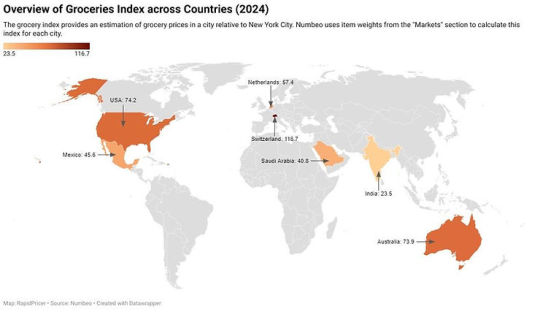
Figure 1: Overview of Groceries Index across Countries (2024)
To give businesses and consumers alike a thorough grasp of worldwide price discrepancies, this article seeks to offer insightful information about the importance of comparing costs across national borders. The topic for retailers will examine how to use market insights to optimize pricing strategies and boost competitiveness, delving into the strategic implications of price differentials.
Understanding Price Disparities:
Retailers must comprehend national pricing differences to manage their operations and pricing strategies in foreign markets. These differences are the result of several factors, each of which has a distinct impact on the retail environment:
Currency Exchange Rates: Changes in exchange rates affect retail prices and import expenses. To reduce currency-related risks, retailers need to make frequent price adjustments.
Tariffs and Taxes: International retail prices are impacted by both government taxes and tariffs. Retailers who want to maintain competitive pricing must be aware of and abide by local tax legislation.
Living Expenses: Differences in living expenses have an impact on retail prices and purchasing power. Retailers modify their pricing tactics to take local cost of living considerations into account.
Supply Chain Dynamics: Retail pricing is impacted by the complexity and efficiency of the supply chain. Retailers streamline their supply networks to cut expenses and guarantee on-time delivery.
Regulatory Disparities: Differences in regulations impact retail pricing and raise the cost of compliance. When entering new areas, retailers must manage the complexities of regulations.
The Impact of Globalization: Through convergence and divergence, globalization affects retail prices. Retailers modify their tactics to take advantage of economies of scale and serve a variety of markets.
Methodology for Comparing Prices:
Several approaches are employed when comparing pricing between nations to guarantee accurate and insightful comparisons. Gaining dependable insights into price differences requires a grasp of the strengths and limits of each methodology. Below is an explanation of the various pricing comparison methodologies:
Parity of Purchasing Power (PPP): By comparing the costs of goods and services across countries and adjusting exchange rates to equalize prices when stated in a common currency like the US dollar, PPP theory analyzes monetary values.
Price Index (e.g., Consumer Price Index): Indices such as the CPI monitor variations in the average price of a basket of goods and services over time, indicating trends in either deflation or inflation as well as shifts in the purchasing power of a country.
The Basket of Goods Method: This method provides information on relative affordability and market competitiveness by comparing the costs of a chosen set of goods and services across international borders. Retailers frequently use it to evaluate pricing tactics and make comparisons with rival businesses.
Case Studies and Examples:
Comparison of Prices for Selected Goods and Services Across Different Countries:
Food and Groceries
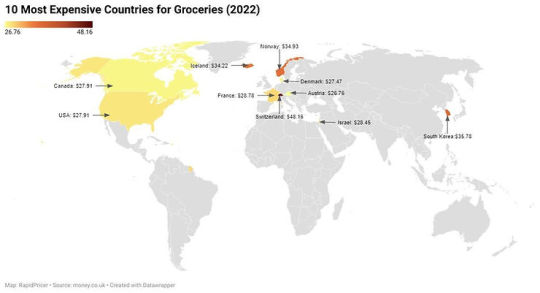
Figure 2: 10 Most Expensive Countries For Groceries (2022)
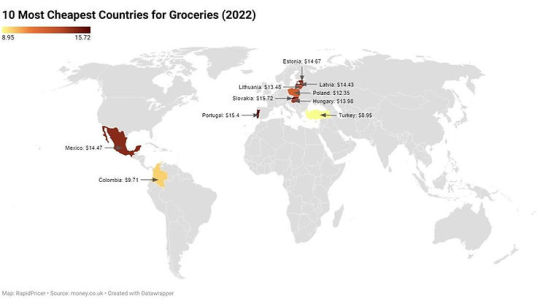
Figure 3: 10 Most Cheapest Countries For Groceries (2022)
USA: Brand, store type and location are some of the variables that affect food prices in the USA. When compared to other industrialized nations, the average cost of groceries in the USA is reasonable.
India: Because of its big agricultural sector and cheaper production costs, India typically has lower food prices than other nations. Prices, however, might differ greatly between rural and urban locations.
Mexico: A lot of reasonably priced food options are available in Mexico, especially for locally manufactured goods. Costs may be comparatively lower in Mexico than in other nations, which draws travellers on a tight budget.
Netherlands: Due to factors including high labor expenses, stringent regulations, and import tariffs, food prices in the Netherlands are often higher than in several other European countries. But there are other reasonably priced solutions out there, particularly in supermarkets.
Switzerland: The country is renowned for having a high cost of living, which includes comparatively high food prices. Switzerland has higher grocery costs due to several factors, including a small amount of arable land, hefty import taxes, and a strong currency.
Dubai: The cost of food varies in Dubai based on several variables, including store type, location, and the proportion of domestically and imported goods. Due to import duties, some products may be pricey, but others—especially locally-grown produce—may be reasonably priced.
Singapore: Land scarcity, high labor costs, and reliance on imports are some of the factors influencing Singapore's food prices. Although meal costs in Singapore are often higher than in its neighbors, there are some reasonably priced options, especially at hawker centers.
Australia: Due to reasons including geographic remoteness, high labor expenses, and stringent restrictions, food prices in Australia might be relatively high when compared to some other countries. But there are other reasonably priced solutions out there, particularly in local markets and supermarkets.

Figure 4: Price Level By Country
Healthcare services
USA: The United States of America has some of the highest healthcare expenditures in the world, primarily due to high administrative costs, costly medical procedures, and pharmaceutical pricing.
India: Compared to wealthy nations, healthcare services in India are typically more economical, with lower consultation, hospital, and prescription prices. India has a high rate of medical tourism because of its affordable healthcare alternatives.
Mexico: In comparison to the United States, Mexico provides reasonably priced healthcare services, with lower consultation fees, hospitalization charges, and drug pricing. Mexico is seeing an increase in medical tourism as well, especially for elective treatments.
Netherlands: With a sophisticated healthcare system and universal health coverage, healthcare prices in the Netherlands are reasonable when compared to those in several other European nations. Nonetheless, the cost of private healthcare services can often be high.
Switzerland: Due to variables including pricey medical equipment, high-quality healthcare infrastructure, and high salaries for medical professionals, Switzerland has some of the highest healthcare expenditures in the world.
Dubai: Depending on a number of variables, including the facility type, medical expertise, and insurance coverage, the cost of healthcare services in Dubai varies greatly. In comparison to Western nations, certain services might be more reasonably priced, while others might be more costly.
Singapore: In comparison to Western nations, Singapore provides excellent healthcare services at reasonably affordable prices. Residents can afford healthcare more easily because of government insurance programs and healthcare subsidies.
Australia: With a combination of public and private healthcare choices, healthcare prices in Australia are low when compared to some other wealthy nations. The government's Medicare program lowers individuals' out-of-pocket costs by offering subsidies for necessary medical services.
Regional Variances and Trends:
With an emphasis on retail pricing, the following examines regional price disparities and new developments in worldwide price patterns:
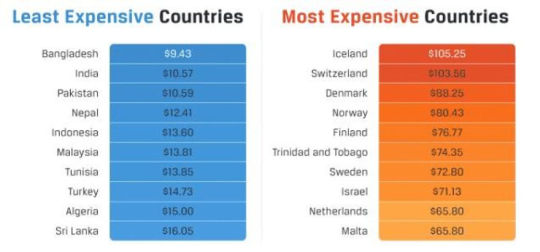

Figure 6: Average Cost of Meal For Two in 2020 (Source: Numbeo.com)
Asia-Pacific: Because of the region's varied economic development levels, disparities in infrastructure, and import/export expenses, there are notable pricing fluctuations in this area. For comparable commodities, industrialized economies like South Korea and Japan typically charge more than developing economies like Vietnam and India.
Europe: Because of economic unity brought forth by the European Union, price fluctuations within Europe are less than those in Asia-Pacific. Prices nevertheless vary due to disparities in taxation and living levels. Prices in Western European nations are often higher than those in Eastern European nations.
New Developments in International Price Trends:
Influence of e-commerce: Pricing competition and transparency are being increased by online retailers, which is reducing regional pricing differences for some products. Prices can still vary, though, due to things like local taxes and delivery expenses.
Impact of COVID-19: The pandemic generated transitory price changes and supply chain disruptions for a variety of items, especially those that had production issues or were strongly dependent on imports. While some prices have leveled off, persistent interruptions may have long-term effects on others.
Strategies for Retailers to Leverage Price Differences:
Cross-Border Shopping:
Retailers can leverage price differences by sourcing products from countries where production costs or taxes are lower.
Establishing partnerships with suppliers in different countries allows retailers to access a wider range of products at competitive prices.
By offering imported goods at lower prices compared to domestic alternatives, retailers can attract price-conscious consumers and gain a competitive edge in the market.
2. Online Shopping:
Online shopping enables retailers to reach customers beyond geographical boundaries, allowing them to tap into markets with favorable price differentials.
Setting up an e-commerce platform allows retailers to offer products at competitive prices to international customers, leveraging lower production costs or tax advantages in certain regions.
Dynamic pricing algorithms can be employed to adjust prices based on real-time market conditions, optimizing profitability while remaining competitive in the global marketplace.
3. Market Localization:
Retailers can tailor pricing strategies to local market conditions, taking into account factors such as consumer purchasing power, competitive landscape, and regulatory environment.
Offering region-specific promotions, discounts, and pricing strategies helps retailers appeal to local preferences and capture market share effectively.
Localization efforts extend beyond pricing to include product assortment, marketing campaigns, and customer service, fostering a deeper connection with target audiences.
4. Strategic Alliances and Partnerships:
Collaborating with local businesses or distributors in target markets allows retailers to leverage their expertise and networks to navigate regulatory complexities and distribution channels.
Strategic alliances enable retailers to access market insights, infrastructure, and resources that may otherwise be inaccessible or costly to develop independently.
By forming partnerships with trusted local partners, retailers can establish a stronger presence in international markets and leverage price differences to their advantage.
5. Data-Driven Pricing Optimization:
Utilizing data analytics and predictive modeling enables retailers to identify pricing opportunities and optimize pricing strategies based on market demand, competitor pricing, and consumer behavior.
Implementing dynamic pricing algorithms allows retailers to adjust prices in real-time, responding to changes in market conditions, inventory levels, and competitive dynamics.
By leveraging data-driven insights, retailers can maximize profitability while remaining responsive to price differentials and market trends.
Retailers can leverage price differences through cross-border shopping, online shopping, market localization, strategic alliances, and data-driven pricing optimization. By adopting these strategies, retailers can enhance competitiveness, expand market reach, and capitalize on opportunities presented by global price differentials.
Conclusion:
Retailers must compare prices across national borders to maximize profitability, improve competitiveness, and optimize their pricing strategies in the global economy. Retailers can find ways to take advantage of cheaper production costs, attractive exchange rates, and market-specific factors by carefully analyzing price differentials. Retailers may effectively navigate international marketplaces and take advantage of price gaps by using strategies including data-driven pricing optimization, market localization, cross-border shopping, online shopping, and strategic alliances. Retailers may improve their market position, increase their client base, and promote sustainable growth in an increasingly interconnected world by comprehending and taking advantage of worldwide price disparities.
About RapidPricer
RapidPricer helps automate pricing and promotions for retailers. The company has capabilities in retail pricing, artificial intelligence and deep learning to compute merchandising actions for real-time execution in a retail environment.
Contact info:
Website: https://www.rapidpricer.com/
LinkedIn: https://www.linkedin.com/company/rapidpricer/
Email: [email protected]
#globalcommerce hashtag#pricecomparison hashtag#retailstrategy hashtag#consumerinsights hashtag#markettrends hashtag#crossbordershopping hashtag#globalization hashtag#retailoptimization hashtag#pricedifferentials hashtag#marketcompetitiveness hashtag#internationaltrade hashtag#economicanalysis hashtag#retailindustry hashtag#supplychainmanagement hashtag#dataanalytics hashtag#pricingstrategy hashtag#marketlocalization hashtag#strategicalliances hashtag#ecommerce hashtag#retailinnovation hashtag#businessgrowth hashtag#marketexpansion hashtag#globaleconomy hashtag#retailtech hashtag#retailinsights hashtag#groceryretail hashtag#businessdevelopment hashtag#retailers hashtag#consumers
0 notes
Text
Why choose Xpandretail for People Counting and Sale Data Automation.
Discover the power of data-driven retail with Xpandretail's cutting-edge solution for people counting and sale data automation. 📈🔍
Don't miss out on the future of retail! 🛍️💡 Visit our website xpandretail.com to learn more about how Xpandretail can transform your business.

#RetailRevolution#DataDrivenRetail#Xpandretail#RetailTechnology#AnalyticsSolution#RetailInsights#DataDrivenBusiness#RetailOptimization#Xpandmall#SàvantDataSystem
1 note
·
View note